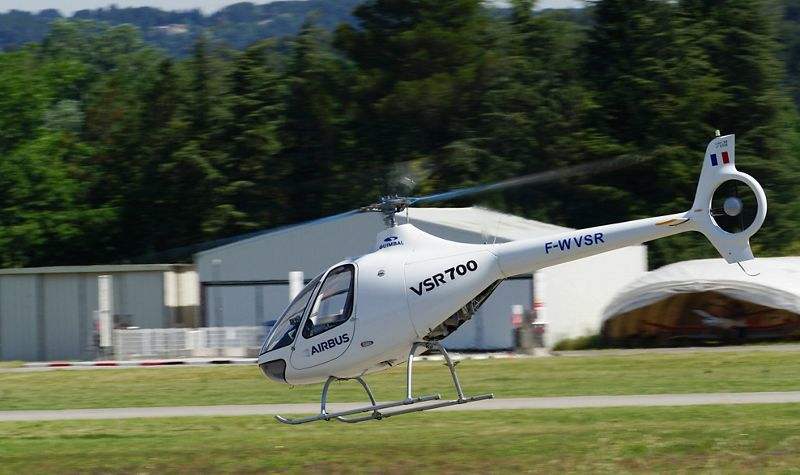Airbus Helicopters has started flight trials of an optionally piloted vehicle demonstrator for the future VSR700 shipborne rotary-wing tactical unmanned aerial vehicle.
Airbus Helicopters recently started autonomous flight trials of a VSR700 Optionally Piloted Vehicle (OPV) demonstrator, paving the way for a first flight of the actual VSR700 prototype in 2018.
A light military rotary-wing tactical unmanned aerial vehicle, the VSR700 is being developed jointly by Airbus Helicopters and Helicopteres Guimbal, the original manufacturer of the civil-certified Cabri G2 helicopter from which the VSR700 is derived.
This phase of flight trials with a safety pilot will focus on refining Airbus Helicopters’ automatic flight control system aboard the OPV, eventually leading to fully autonomous flights without a safety pilot. The VSR 700 flight control system is a fully-digital, multi-channel system with a very high level of redundancy.
Sea trials of a manned Cabri G2 have also recently taken place with the support of a French Navy air defence frigate in order to assess the flight envelope of the VSR700 platform for shipborne operations.
The VSR700 will be capable of carrying a wide array of mission equipment with a maximum capacity of up to 250kg. Depending on the mission, its endurance could exceed 10 hours.
Developed to meet navies’ requirements for a shipborne rotary-wing tactical unmanned aerial vehicle as a complement to manned helicopters, it could also be used in land-based military operations to carry out Intelligence Surveillance Target Acquisition and Reconnaissance (ISTAR) missions, thanks to the VSR700’s optical sensors and maritime/land radar.
According to Airbus Helicopters, the VSR700 will have a much lower operating cost than a helicopter not only thanks to its well-proven civil base vehicle and low-consumption diesel engine, but also because it requires fewer resources and less manpower to operate and maintain it.
The programme was first unveiled at the Euronaval exhibition in 2016.

